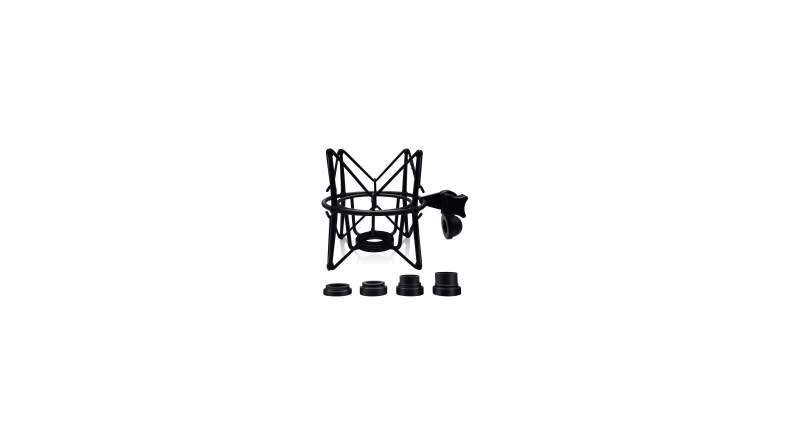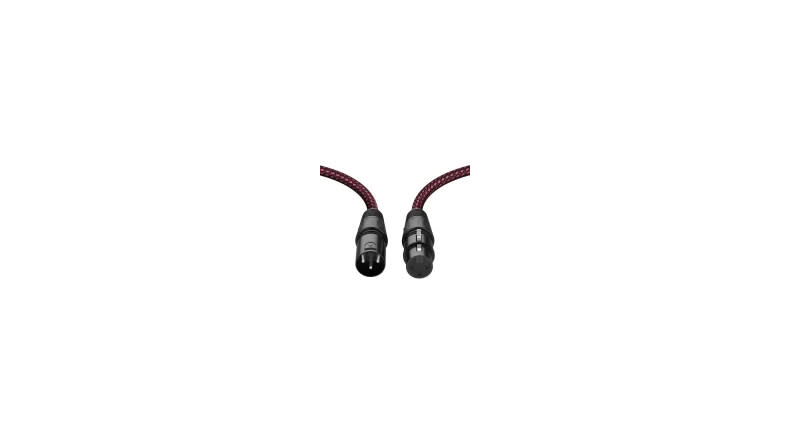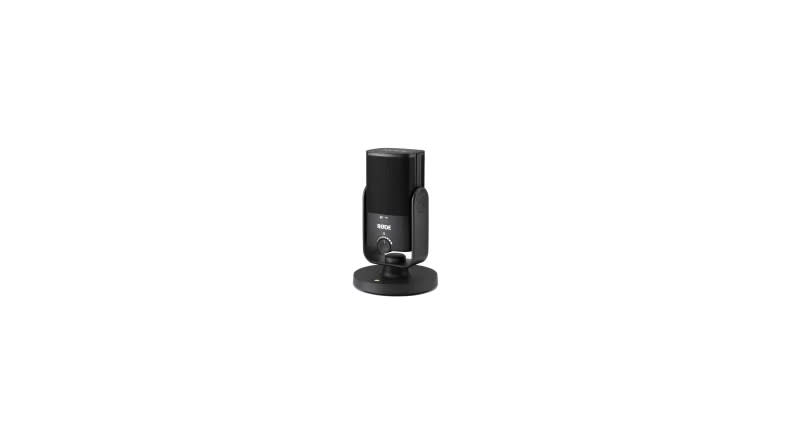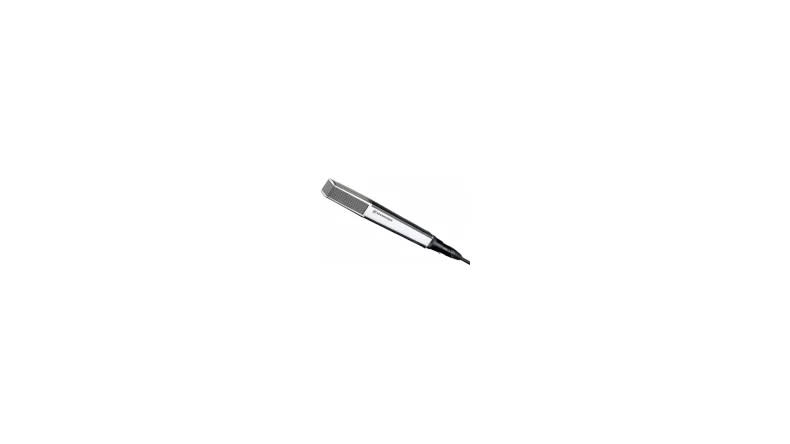Gearing Up for Audiobook Production: Part 1
Posted on February 16, 2021 by Andreea Gabor

Your voice is a complex storytelling instrument. That’s why you need the right studio equipment to record each change in tone and range of vocal frequencies. In part one of this two-part guide, we’ll help you choose the best microphone and microphone essentials for recording and producing your first audiobook—or your 50th. Then, in part two, we’ll dive into the best audio interfaces, headphones, and studio accessories to pair with your microphone.
Real Talk: Microphones
Think clarity, fidelity, and sensitivity. When you’re narrating an audiobook, you’re having an intimate conversation with eager listeners. They want to hear your voice, free of distortion, artificial vocal effects, and extraneous noises. A built-in laptop microphone or gaming headset just won’t cut it. On the other hand, don’t stress about buying the most expensive high-end gear.
Listeners won’t care if you used a Sony C-800G or a Neumann U 87 microphone, but they will remember how your voice made them feel.
They’ll also remember your neighbors arguing in the background while you narrated that tender love scene, so make sure you’re setting up your microphone in a soundproof recording space.

Cardioid Polar Pattern Image Source: Galek76. No changes were made to the original file.
Another key factor that affects how well your microphone will “hear” your voice (and anything in the background), is its polar pattern. Some polar patterns, like multi-directional, will pick up sound waves from all directions, while on the other end of the spectrum, a unidirectional pattern will only pick up sound from one specific area of the microphone head. For audiobook recording with just one sound source (your voice), we recommend using a microphone with a cardioid polar pattern (pictured at right). Microphones with this pattern will only pick up sound that’s directly in front of it and filter out noise coming in to the sides and back.
Below, we’ll walk you through the best microphones for audiobook production and their advantages and disadvantages. We suggest using this list as a guide to inform your own research and, when possible, we recommend going to your local music store (following all local Covid guidelines) or finding a supplier that allows free in-home trials to test out the microphones and see which ones best fit your voice and narration style.
Condenser Microphones
These are the most popular microphones for recording audiobooks. As some of the most sensitive microphones, they’re tuned to capture the frequencies and nuances of the human voice, and typically feature the cardioid polar pattern we recommended above. What sets condenser microphones apart from other mics is their engineering. All microphones have a diaphragm, a flexible internal membrane that vibrates when sound waves hit it, but only condenser microphones have a charged metal plate behind the diaphragm. This feature gives condenser microphones their signature bright, and sensitive, sound. Furthermore, condenser microphones have varying diaphragm sizes. Large diaphragms can make your voice sound richer, more vibrant, and give it that “larger-than-life” voiceover quality, while small diaphragms are adept for musical instruments. The condenser microphones we’ve selected below are balanced and ideal for a range of budgets:
The Rode NT1 is one of the best all-around and quietest microphones on the market.
Models like the MXL Mics 770 and the AKG Pro Audio C214 have on-off switches to ignore low frequency noise, which helps clarify vocals with deeper tones.
The Audio Technica AT2020PK Pack includes accessories like an adjustable boom arm and headphones.
Last but not least, Neumann microphones are heralded as the holy grail for professional recording studios.

Find these product recommendations and more on our Condenser Microphones Amazon Idea List.
Be sure to check the product descriptions before purchasing, as some of these microphones do not include an XLR cable or mount. Furthermore, all condenser microphones will need an external power source to work, which can typically be provided by an audio interface.
USB Microphones
For narrators just starting out, USB-powered microphones can be a cost-effective alternative to condenser microphones which need additional gear like an audio interface, cables, and mic stand to work. The USB microphones we’ve included below feature a cardioid pattern and a condenser capsule, so you’ll still have access to that signature bright sound that condenser microphones are known for. Each model in our selection also comes with a tabletop microphone stand. Additionally, these USB mics are plug-and-play, meaning you can connect them to your computer and start recording right away. Be sure that you double check your computer ports to ensure proper connectivity; you may have to purchase a compatible cable or adapter.
The Blue Snowball iCE microphone is a good budget-friendly option, while the Rode NT offers more control over your audio with a built-in pop filter and switchable low-latency monitoring mode.
The Audio-Technica ATR2500x model has a low-mass diaphragm for excellent frequency response.
Lastly, the Samsung G-Tract Pro has a built-in audio interface and is very versatile, allowing you to switch between three polar patterns, and even works well with musical instruments.

Blue Snowball iCE USB Mic
Find these product recommendations on our USB Microphones Amazon Idea List.
Dynamic Microphones
Earlier, we said that condenser microphones are the most popular microphones for voice recording, but the catch is that they work best in soundproof spaces. City dwellers, we hear you—it’s challenging to create a recording studio in your apartment, much less completely soundproof it. That’s why we suggest going with a dynamic microphone in less than ideal recording environments. Think of dynamic microphones as the distant cousin to the super-sensitive condenser mic. Dynamic microphones won’t capture all sounds, and sometimes that’s a good thing. Maybe the highs and lows of your voice just sound better with a dynamic microphone. Or maybe you’ve just gotten the band back together and need a mic that’s great for audiobook recording and live performance. We picked these dynamic microphones for their sound quality and suitability for novices and professionals alike. All of these mics feature a cardioid polar pattern, and most include an internal pop filter for mouth noise reduction, and a built-in shock mount to reduce vibration.
The AT2100x is the only one on our list which doesn’t have a pop filter or shock-mount, but it balances this out with its low price point and ability to connect to your computer directly as a USB mic, and your audio interface with an XLR cable.
The Shure SM58S is a great starter mic with an on-off switch and frequency response tailored for vocals.
If you’re worried about extraneous background noise, get the MXL BCD-1 which has side rejection that increases sound isolation.
Models like the Rode Pod Mic, Shure SM7B, and Electro-Voice RE-20 will have a flat, wide-range frequency response for clean and natural sound production.
Narrators looking for a higher-end solution will love the Sennheiser MD441-U with excellent feedback rejection and sound quality.

Shure SM58-CN Cardioid Dynamic Microphone
Find these product recommendations and more on our Dynamic Microphones Amazon Idea List.
As we noted above, check the product descriptions before purchasing as some of these microphones do not include an XLR cable or mount. Furthermore, all dynamic microphones will need an external power source to work.
Microphone Essentials
Stands
You don’t want to be holding your microphone each time you record. Your sound will be inconsistent, your hand movements may get picked up by your microphone, and to be totally transparent, your arms will get sore after hours of studio time (no matter how often you go to the gym). A stable microphone stand will make all those problems disappear.
There are many different stands on the market, so make sure that you get one that’s compatible with your microphone size and weight. For instance, most condenser microphones need a shock mount in order to attach to a stand (check that the shock mount diameter is compatible with the size of your mic). You should also get a stand that best suits your recording style. Some stands will only work when placed on top of a table, and you’re sitting down; others range from three to seven feet tall and are made to use while standing up.

Boseen Shock Mount Mic Holder
Find these product recommendations and more on our Microphone Stands Amazon Idea List.
Filters
If your microphone doesn’t already include one, you should definitely get a pop filter. When set up properly in front of your microphone, they will filter out sibilance and plosives, i.e. extra “hiss” and “pop” sounds that come from your mouth while recording. An added bonus is that pop filters will help you manage your distance from the microphone. Another essential add-on is the isolation shield. These are like compact acoustic panels that get attached to the back of the microphone and block out ambient noise.

Dragonpad USA Microphone Pop Filter, for Blue Yeti, Blue Snowball USB Microphones
Find these product recommendations and more on our Microphone Filters Amazon Idea List. Be sure to check that the pop filter and isolation shield you choose are compatible with your specific microphone and recording setup.
Cables
Some, but not all, microphones come with an XLR cable in the box. These cables are designed to connect your microphone to an external audio interface, which is then connected to your computer via USB. You’ll want a balanced XLR cable with an insulated or braided cover to shield it from electromagnetic noise/interference and to increase sound fidelity. We’ve listed our top picks below with a range of options for beginner, intermediate, and professional narrators.

BIFALE Heavy Duty Nylon Braided XLR Cable
Find these product recommendations and more on our Microphone Cables Amazon Idea List.
And... mic drop!
Just kidding! You should never drop your microphone, unless it’s as rugged as the Shure SM58. (Even then, you still shouldn’t drop your microphone). Pop Quiz: Choose the word in parentheses that best completes each phrase. The Shure SM58 is a dynamic microphone, which means it picks up sound with (more OR less) precision than a condenser mic and is suitable for (noisy OR soundproof) studio environments. Answers: less precision, noisy studio environments Now that you know what to look for when buying a voice recording microphone, check out part 2 of our “Gearing Up” series to see which audio interface, DAW, and headphones will complete your ideal setup.











